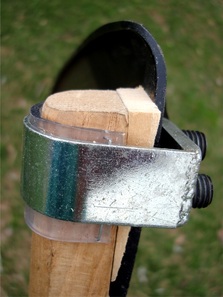 If the tang angle on your scythe blade is too high, it can be compensated for by adding a wooden wedge, in between the snath and the tang of the scythe blade. This has the equivalent effect of reducing the tang angle of the blade. It can also be very useful for fine-tuning the lay of the blade, when you are using a hook-nosed scythe blade, like the 2010 model that I sell. If you are having trouble with the hook-nosed tip catching and digging into the dirt, adding a small wooden wedge like this, can correct the lay of the blade so that it glides smoothly over the ground. I include one of these wooden wedges with every 2010 blade that people order from me, but you can easily make your own, and even make a variety of sizes, for a very fine-tuned, customized lay of the blade.
1 Comment
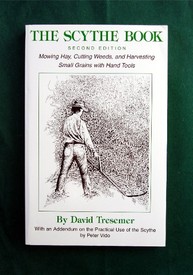 I just read on another website that The Scythe Book by David Tresamer, is still considered the "Bible" for scythe users. If that is true, it is mainly because it's still the only book in print, in the English language. Surprisingly, this book is actually responsible for a lot of confusion with Austrian scythe users. I live in an area with many organic gardeners, and the area is saturated with mail-order scythes and The Scythe Book, Mostly the first edition. When I mention that I sell scythes, and teach scythe workshops, they proudly tell me that they've had a scythe for a long time, and that they already know how to use it, and that they love it. When I ask them what they mow with it, they admit "Oh, I don't use it that much really. Just for weeds, now and then. It works great for that." When I ask them how they sharpen it, they proudly pantomime their interpretation of using a whetstone. When I ask them if they've ever peened their blades, they say " No, I never did figure out how to do that. I probably should." In 2009 I had another opportunity to lead a grain harvest/experiment. This time, one of my Spring Scythe Workshop participants had a field of oats that she had had planted on her land as a nurse crop for hay. She wanted to try to harvest some of it with a scythe. So we organized a workshop for it. The nice thing about having a grain harvest workshop with oats, was that we had a much greater window of opportunity in which to harvest the grain, compared to other grains. Oats don't fall off as easily, when ripe. This extended time-frame made it easier to schedule a workshop, and also to work around the weather.
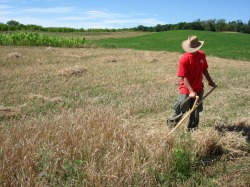 I met Martin at my 2008 Spring Scythe Workshop. Martin had been growing grains in his home garden plots for a number of years, and he wanted to expand to growing and harvesting grains by hand on a larger scale. He had contacted Peter Vido to find out how to harvest grain with a scythe. Peter Vido recommended that he attend one of my scythe workshops. If you can, it's best to learn how to use a scythe at a workshop. It shortens your learning curve considerably. After the workshop, Martin and I hatched a plan to hold a scythe workshop/experiment at his farm, when he had a grain crop ready to harvest. He would get help harvesting his crop, the workshop participants would provide the labor in exchange for the learning opportunity, and I could gain knowledge and sell scythes. A win-win-win situation. What could go wrong? |
Botan AndersonArchives
March 2023
Categories
All
|
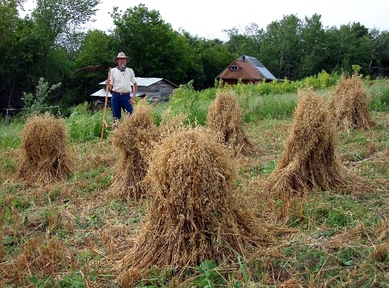
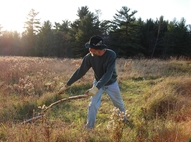
 RSS Feed
RSS Feed